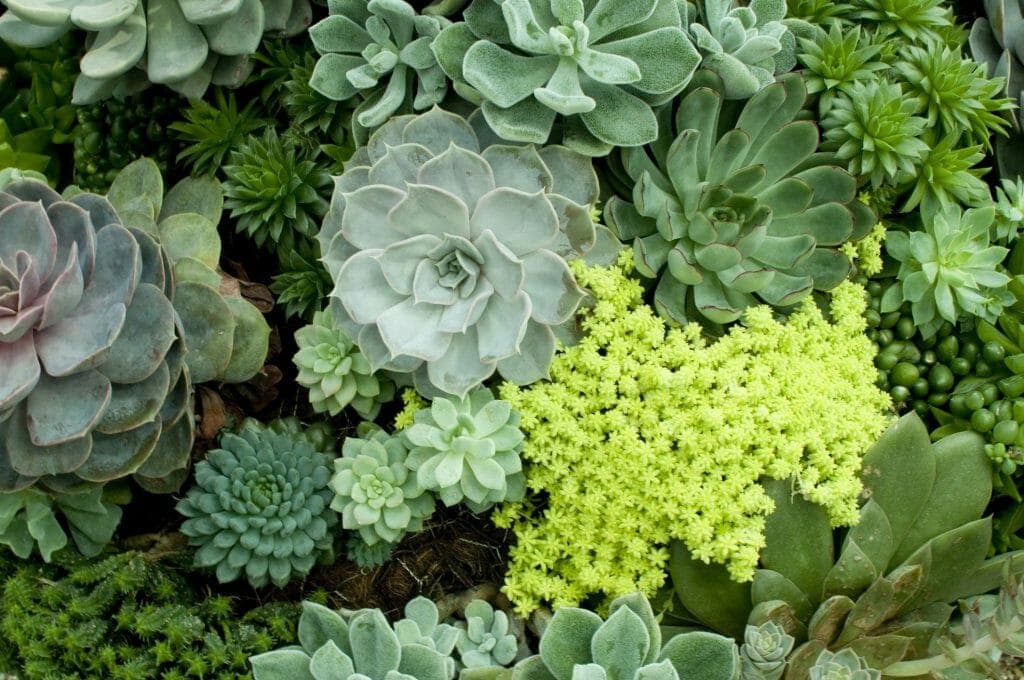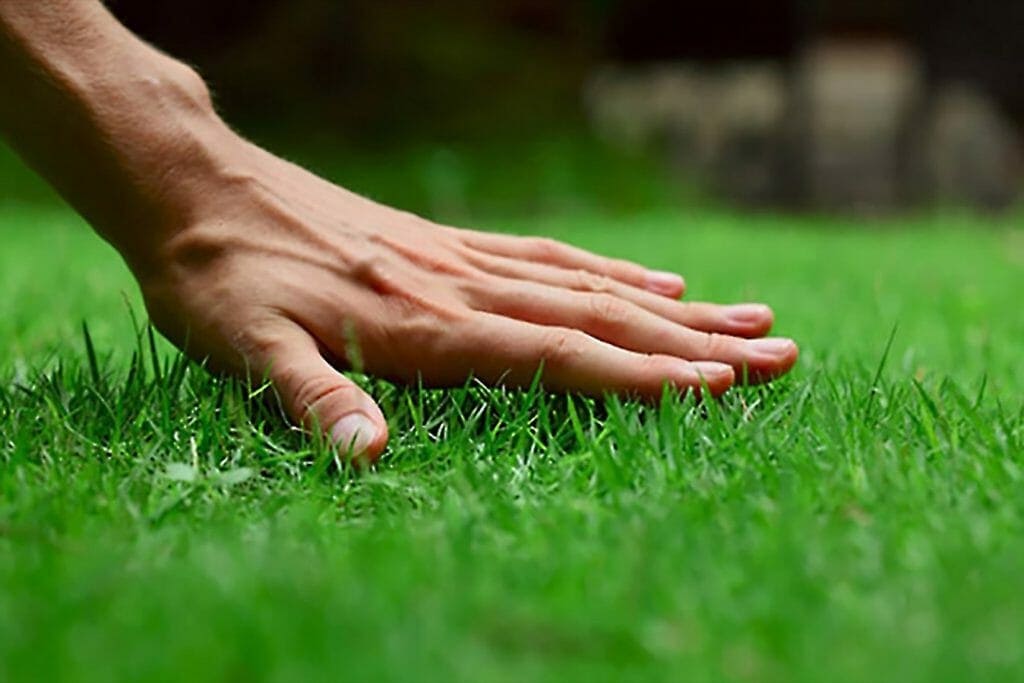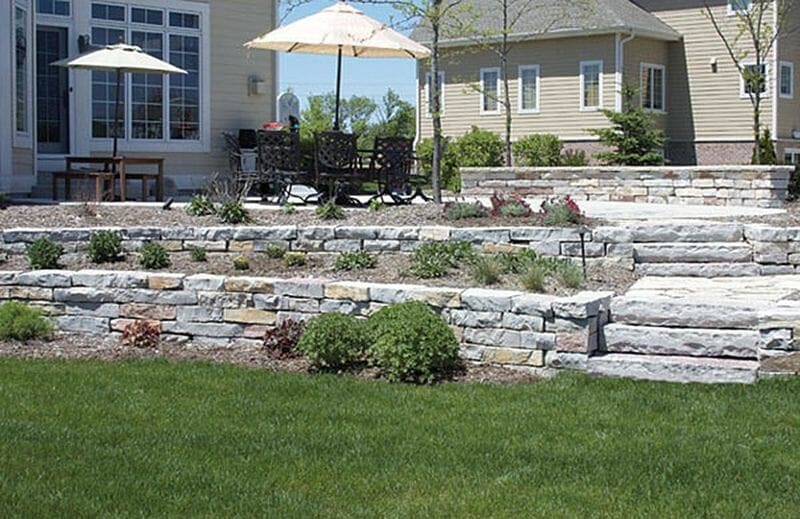Written by Lisa Hallett Taylor and https://www.thespruce.com/.
Succulent ground cover is a unique and low-maintenance option for homeowners seeking to create a no-fuss area in the garden. Low-growing succulents come in a variety of sizes and colors, many with flowers that add a unique charm to your landscape. For the best results, follow this guide on how to grow and care for succulent ground cover.
The Best Low-Maintenance Succulents to Grow Outdoors
It seems like everyone has developed a thirst for succulents—those plants with exotic shapes and diverse forms that are easy to maintain and create a bold statement wherever they grow. Even beginning gardeners are tempted to buy one or two out of curiosity, with some getting hooked after seeing how beautiful and manageable they are.
Many of the uninitiated take a look at a bed of succulents and refer to them as Hens and Chicks (Sempervivums). There are hundreds—thousands—of others that aficionados collect, trade, share, and discuss in person and online. Some people love them because they are so easy to propagate—just take a snip, let callous over, and plant in the ground or in a container.
In regions that have been affected by drought or practice water-wise landscaping, succulents are a gorgeous and simple addition to the garden. They also thrive on patios, decks, and balconies, and make smart choices for pool area landscaping.
Planting the Right Succulents
Things you should know before you get started:
- Succulents require more water in summer. If you live in a region with little rainfall, plan to water in-ground succulents once a week. Those in containers will require water about three times per week.
- Reduce irrigation in fall and winter so that succulents can withstand lower temperatures. Soggy soil and soft, new growth make succulents more susceptible to damage from freezes.
- What grows best in your region? If you aren’t sure, buy from local suppliers: nurseries, succulent plant groups, botanical gardens, etc. This will ensure that they will survive.
- While all-succulent gardens are attractive, start out by working them into your existing landscape. Discover some of the best companion plants for succulents.
Learn more about these easy-to-care-for beauties, including how to pronounce them (so you can impress everyone). And remember: cactus are succulents, but succulents are not cactus. Species are presented alphabetically.
01. Aeonium
- Pronunciation: a-OH-nee-um
Traits: These natives of North Africa’s Canary Islands prefer more moisture than most succulents. Darker ones, like the purple/black Aeonium ‘Zwartkop’, can tolerate sun more than the lighter varieties. Many aeoniums are in the forms of flowers and rosettes, making them especially pretty in container gardens or even cut bouquets or arrangements.
Try These:
- Black Aeonium: Aeonium arboreum ‘Zwartkop’
- A. artropurpureum
- Kiwi Aeonium: A. decorum “Kiwi’
- Canary Island aeonium: A. canariense
- Sunburst Aeonium: A. ‘Sunburst’
02. Agave
- Pronunciation: a-GAH-vee
Traits: Native to the Americas, in-ground specimens grow more quickly and produce more blooms than their cousins confined to containers. Easily identifiable by their strong forms and large sizes—they make striking landscape plants. Leaves can be smooth, sword-shaped, toothed, or carried in rosettes. Blooms are infrequent but can be magnificent and huge–sometimes 14 feet or more. After flowering, the larger agaves die, but offshoots or pups usually form before this occurs.
Try These:
- Tuxedo Agave: Agave americana
- Fox Tail Agave: A. attenuata; ‘Kara’s Stripes’
- A. ‘Blue Flame’
- A. ‘Cream Spike’
- A. filifera
- A. lopantha ‘Quadricolor’
- Parry’s Agave or Artichoke Agave: A. parryi
- Butterfly Agave: A. potatorum ‘Kissho Kan’ or ‘Kichi-Jokan’
- Queen Victoria Agave: A. victoriae-reginae
03. Aloe
- Pronunciation: AL-oh
Traits: Native to Africa, the Mediterranean, Madagascar, aloes have fleshy, pointed leaves often arranged in rosettes that resemble agaves. Aloes, however, have showy flowers that bloom regularly, with the biggest display of flowers from February to September. Some blooms are tubular shaped and come in shades of orange, red, or yellow, while others are bicolor.
Aloes can be just a few inches high to as tall as trees, with leaves that are either smooth, bumpy, or prickly. It’s those leaves that help funnel water down to the plant’s crown, keeping it moist and succulent. Aloes prefer more water than agaves and other succulents. Their roots are fairly close to the surface, making them ideal next to houses or near pools.
Try These:
- Aloe africana
- A. arborescens
- A. plicatilis
- A. striata
- A. vera
04. Crassula
Pronunciation: KRASS-oo-la
Traits: Native to South Africa, this large genus features small-to-medium succulents that have fleshy leaves arranged in a variety of patterns. Some crassula have branching stems, while others have are low-growing plants with dense foliage that are often good ground covers.
Try These:
- Jade: Crassula ovata
- Crassula argentea
- C. falcata
- C. cooperi
- C. deltoidea
05. Dasylirion
- Pronunciation: das-uh-LIH-ree-uhn
Traits: Although they more closely resemble a palm, this species surprises some people when they learn that they are actually succulents. Popular in xeriscape gardens, they have a southwestern look, and many have green, greyish, or blue-green strap-like leaves with small, sharp teeth that line the leaf edges. Small trunks can become woody, which makes them appear even less like succulents.
These striking succulents like some water, but will grow in desert and drought-tolerant gardens and make attractive container plants.
Try These:
- Mexican Grass Tree: Dasylirion longissimum or D. quadrangulatum
- Desert Spoon: D. wheelerii
- Texas Sotol D. texanum
06. Dudleya
- Pronunciation:
Traits: Native to the southwestern United States and Baja California, Dudleya is another species that also has a lovely flower, rosette shape, and pattern, with fleshy “petals” in green, red, purple, grey, or a mix. They are sometimes confused with Echeverias, although have completely opposite growing seasons. The white and grey varieties are often covered with a chalky powder, which can wash off or get pitted or spotted when it rains. That’s why this type is best kept under a patio or pergola cover.
During the summer, these succulents are dormant and prefer to be kept dry. These easy-to-care-for plants will grow on slopes, in decomposed granite (DG), in rock gardens, and in various types of containers. Flowers emerge on long stalks in shades of red, pink, yellow, and white, and attract hummingbirds.
Try These:
- Dudleya brittonii
- D. cymosa
- D. edulis
- D. lanceolata
- Chalk Live Forever: D. pulverulent
07. Echeveria
- Pronunciation: ech-eh-VER-ee-a
Traits: Native to the Americas, these succulents form beautiful, intricate rosettes in a variety of colors: white, grey, green, pink, and red. Leaves are fleshy and green or grey-green.
Try These:
- Echeveria elegans
- Echeveria imbricata
- E. derenbergii
- E. haageana
- E. pulvinata
08. Euphorbia
Pronunciation: yoo-FOR-bee-uh
Traits: Also known as spurge, there are more than 1,000 species in the euphorbia family. Some resemble cactus, others are globe-shaped, and some make striking accents in the garden. Probably the best-known euphorbia is the poinsettia (Euphorbia pulcherrima), which can be grown into shrubs or trees in mild climates.
Try These:
- Euphorbia echinus
- E. burmannii
- E. characias ‘Humpty Dumpty’
- E. grandicornis
- E. ingens
- E. lactea
- E. horrida
- E. mammilllaris
- E. milii ‘Crown of Thorns’
- E. obesa
- E. obovalifolia
- E. submammilaris
- E. tirucalli ‘Sticks on Fire’
- E. x martini
Original post here https://www.thespruce.com/best-low-maintenance-succulents-grow-outdoors-4080566.



